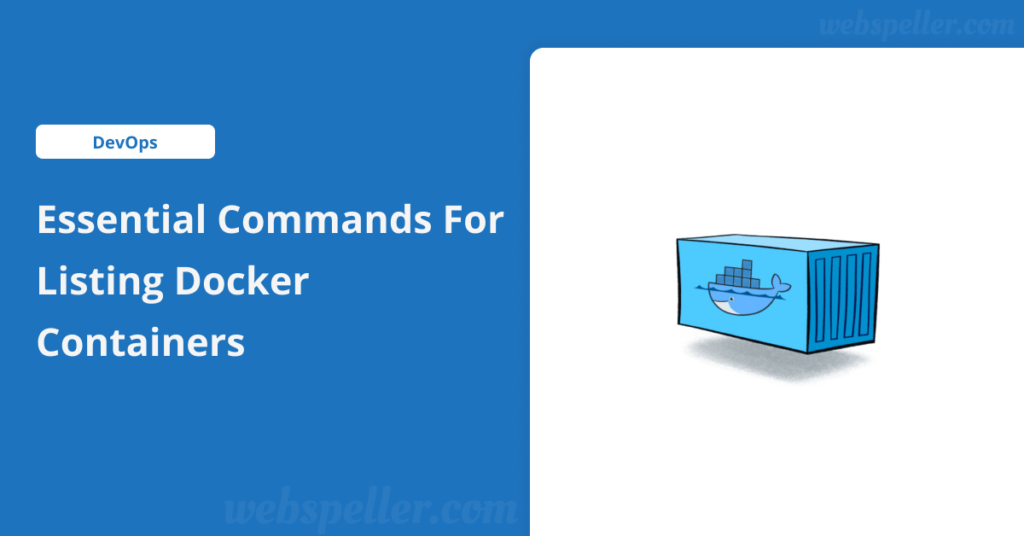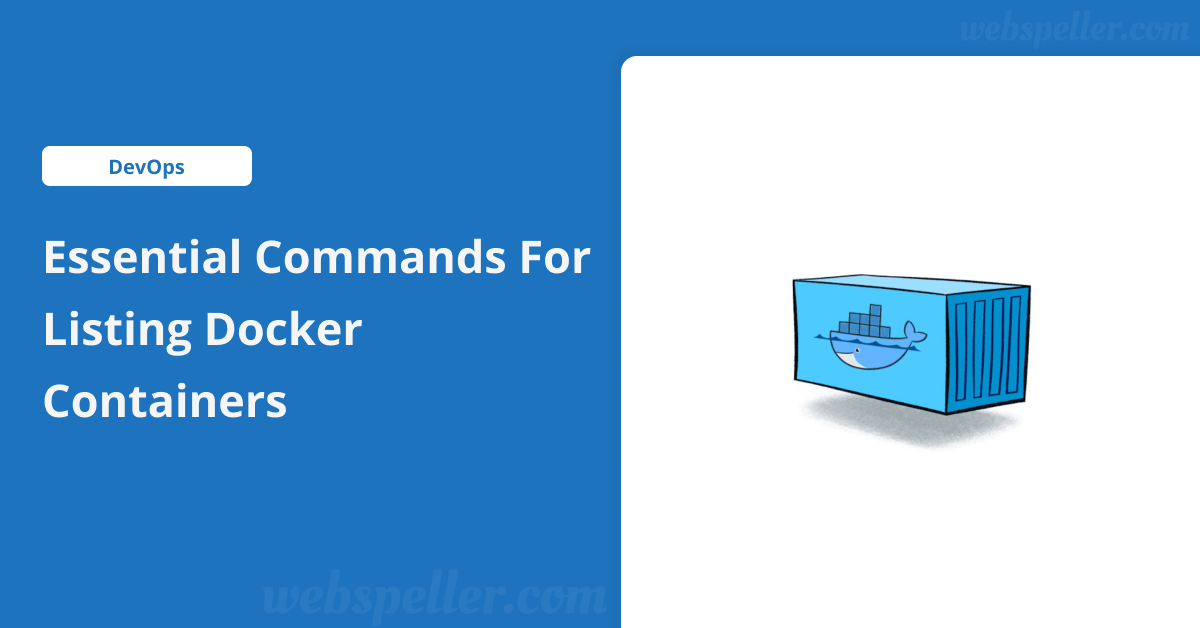
Table of Contents
Essential Commands for Listing Docker Containers
Managing Docker containers effectively is a crucial skill for anyone working in containerized environments. Whether you’re a DevOps professional or just starting with Docker, knowing the commands for listing Docker containers is essential to monitor, audit, and troubleshoot your containers. This guide will take you through the most important commands to list Docker containers, helping you gain better control over your containerized applications.
Why Listing Docker Containers Is Important
Understanding the status of your Docker containers is vital for maintaining the health and performance of your applications. Here’s why listing containers is a critical task:
- Operational Oversight: Quickly identify which containers are running, stopped, or unhealthy.
- Detailed Insights: Retrieve key information like container IDs, names, and status for further management tasks.
- Health Monitoring: Monitor the health status of containers to proactively address potential issues.
- Resource Management: Keep track of resource consumption to optimize your environment.
- Security Audits: Detect unauthorized or redundant containers that could pose security risks.
Now, let’s dive into the essential commands for listing Docker containers.
Commands for Listing Docker Containers
1. docker ps – List Active Containers
The most basic command for listing active Docker containers is:
docker psThis command displays a table with important details like container ID, image, command, creation time, status, ports, and container name. It’s perfect for checking only the running containers on your host.
Example Output:
| CONTAINER ID | IMAGE | COMMAND | STATUS | NAMES |
|---|---|---|---|---|
| abcd1234 | nginx:latest | “/start.sh” | Up | web |
2. docker ps -a – List All Containers
To see all containers, including stopped or exited ones, use the -a flag:
docker ps -aThis command provides a complete view of all containers, helping you audit and manage both active and inactive containers.
Example Output:
| CONTAINER ID | IMAGE | COMMAND | STATUS | NAMES |
|---|---|---|---|---|
| abcd1234 | nginx:latest | “/start.sh” | Exited (0) | web |
| efgh5678 | redis:latest | “/start.sh” | Up | cache |
3. docker ps -n [number] – List Recent Containers
Need to see only the most recently created containers? Use this command:
docker ps -n 5This will list the last 5 containers, helping you focus on recent activities.
4. docker ps -q – List Container IDs Only
When automating tasks or scripting, you may need only the container IDs. The following command gives you a concise list of container IDs:
docker ps -qThis command is ideal for chaining commands in scripts where only container IDs are required.
5. docker ps --format – Customize Output
Docker allows you to format the output to display only the information you need. For example, to list just the container names and their statuses, you can use:
docker ps --format "{{.Names}}: {{.Status}}"This is highly useful for tailoring the output to fit into automation scripts or custom dashboards.
6. docker ps -s – Monitor Container Size
To understand the disk space usage of your containers, use the -s option:
docker ps -sThis will show both the actual and virtual sizes of your containers, helping you manage disk space effectively.
7. docker ps --filter – Filter Containers
Filtering is essential when you have a large number of containers. You can filter the list of containers based on criteria such as status, name, or labels:
docker ps --filter "status=exited"This command is handy for narrowing down the containers you’re interested in based on specific attributes.
8. docker compose ps – List Docker Compose Containers
If you’re working with Docker Compose, use the following command to list containers in your Compose project:
docker compose psThis command provides similar details as docker ps, but it focuses only on containers managed by Docker Compose.
Best Practices for Managing Docker Containers
To make container management even smoother, follow these best practices:
- Use Meaningful Names: Assign descriptive names to your containers using the
--nameflag during container creation. - Label Containers: Leverage Docker labels to categorize and organize your containers, making it easier to filter and search.
- Regular Auditing: Periodically list all containers (using
docker ps -a) to ensure there are no unnecessary or resource-hogging containers on your system.
Conclusion
Mastering the commands for listing Docker containers is an essential skill that empowers you to effectively manage your containerized environments. Whether you’re inspecting active containers, auditing stopped ones, or filtering based on specific criteria, these commands ensure you have full visibility and control over your Docker workloads. Incorporate these practices into your DevOps routine to optimize performance and enhance operational efficiency.
Now that you’ve learned the essential commands, start practicing them to boost your Docker management skills!


